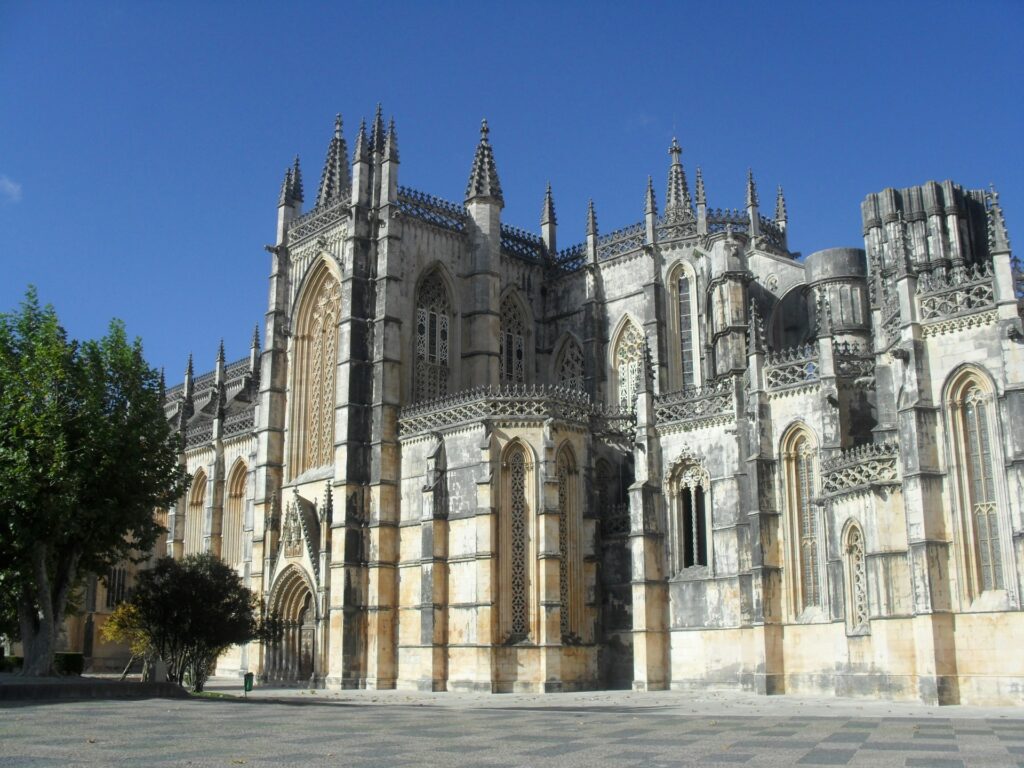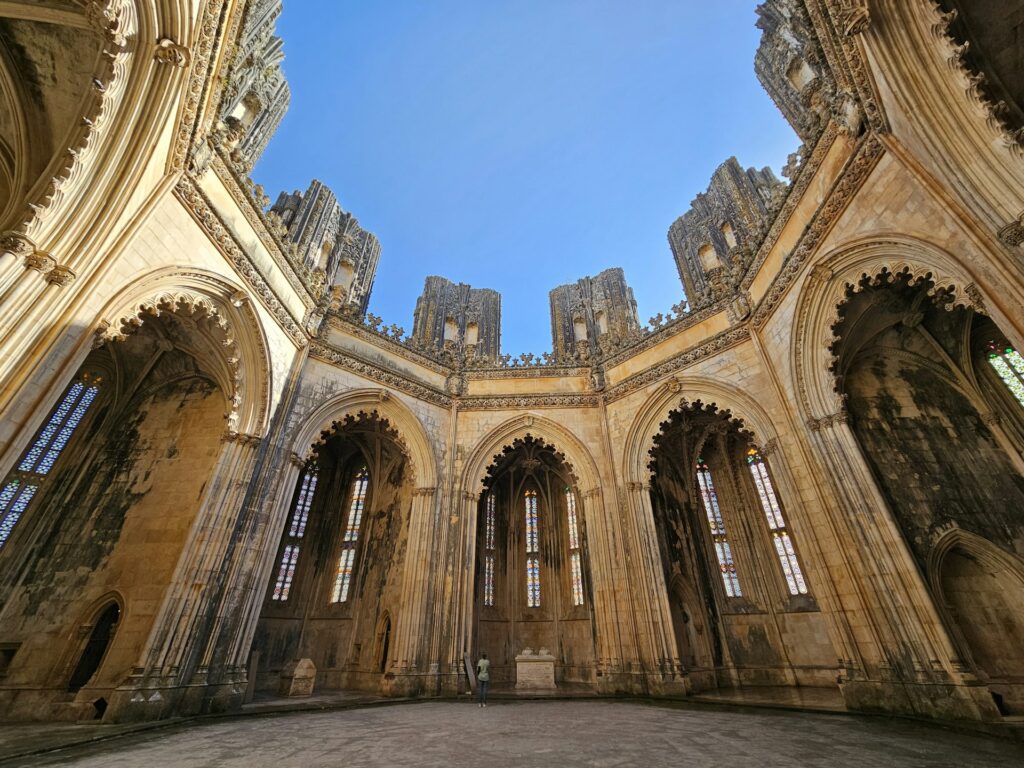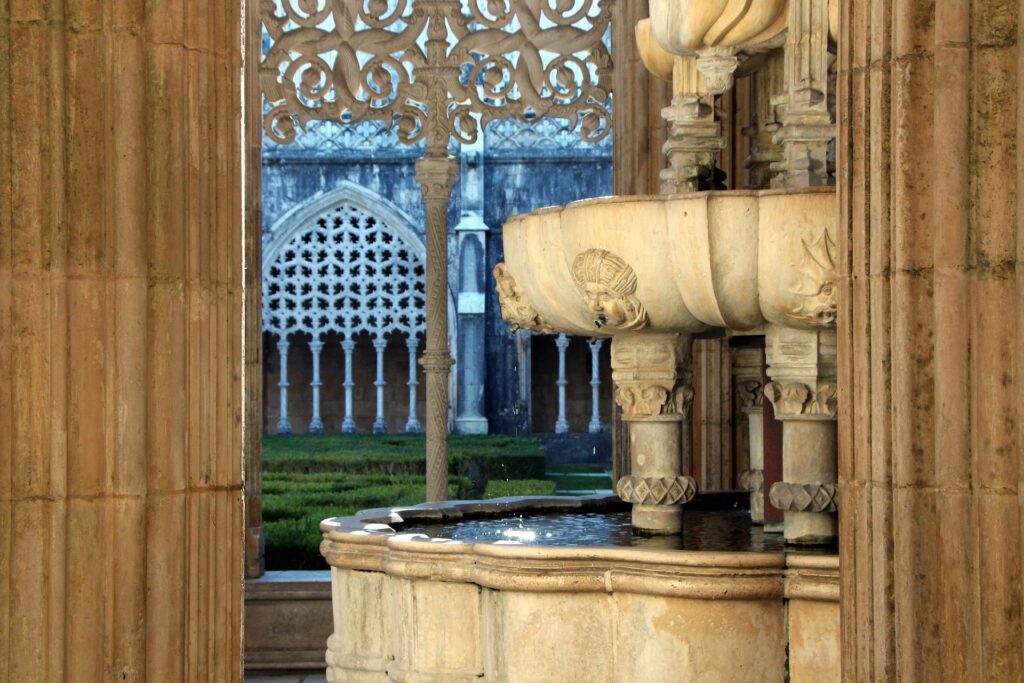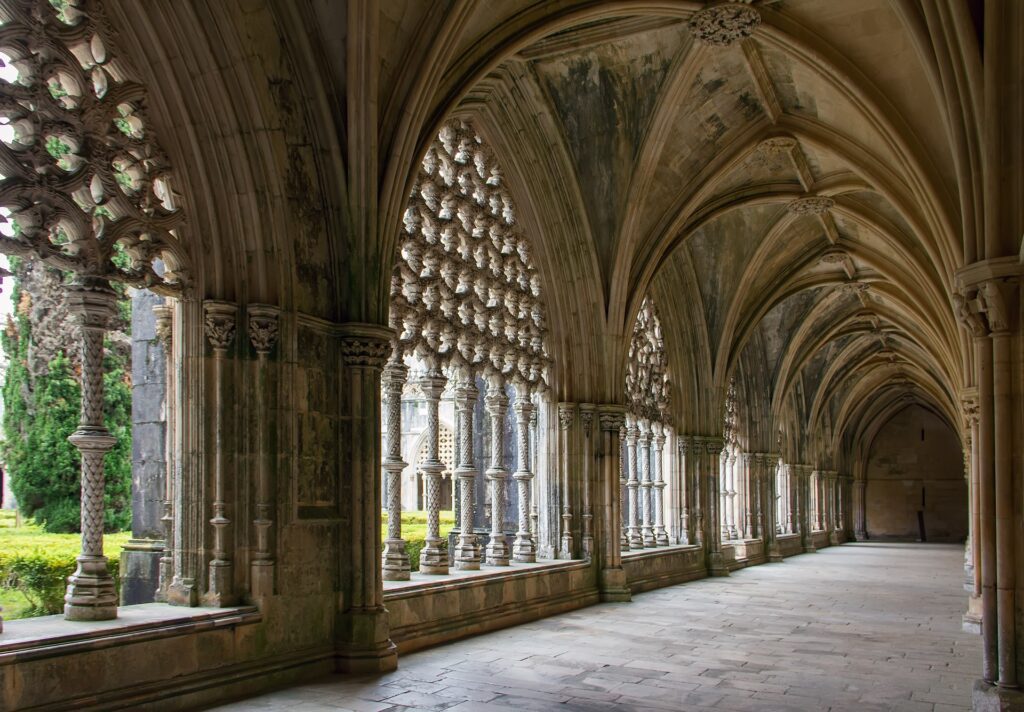Batalha Monastery – History and Facts
Introduction
Located in the Leiria region of Portugal, Batalha Monastery is an impressive structure that showcases the splendor of Gothic architecture and a rich historical past. Having served as a royal mausoleum, victory monument, and religious center for centuries, the monastery today stands as a captivating attraction for both locals and tourists from around the world. Let’s take a closer look at this magnificent structure and uncover some interesting facts about Batalha Monastery.
History of Batalha Monastery

The story of Batalha Monastery is closely linked to Portugal’s struggle for independence. In 1385, the Battle of Aljubarrota against the Kingdom of Castile was a decisive victory for Portugal. Attributing this victory to the Virgin Mary, King João I ordered the construction of a magnificent monastery to show his gratitude and immortalize the victory: Batalha Monastery. The construction of the monastery began in 1388 and lasted nearly a century. During this time, the different kings who sat on the Portuguese throne enriched the monastery’s architecture, reflecting their own tastes and visions.
The monastery houses the Founder’s Chapel (Capela do Fundador), considered one of the most beautiful examples of Gothic architecture. This chapel is where King João I and his wife Filipa rested in eternal sleep. Their tombs are considered masterpieces that further enhance the splendor and sanctity of the chapel.
During the 1st century, the Batalha Monastery became not only a place of worship, but also the burial place of Portuguese royalty and the center of the most important religious ceremonies. However, the monastery’s glorious history suffered greatly during the great Lisbon earthquake of 1755 and the Napoleonic Wars of the early 19th century. These disasters led to the destruction of parts of the monastery and damaged its splendor.
In the 2nd century, thanks to extensive restoration work, the Batalha Monastery was restored to its former splendor. These works not only revealed the monastery’s architectural richness, but also emphasized its historical significance. In 1983, the Batalha Monastery was inscribed on the UNESCO World Heritage List, and today it is considered one of the most important tourist attractions in Portugal.
Masterpiece of Gothic Architecture

The Batalha Monastery is a masterpiece of Gothic architecture and artistic finesse. High vaulted ceilings, stained glass windows dancing with light, intricately carved columns and exquisite sculptures turn the monastery into a work of art. At the time of the monastery’s construction, both Gothic and Manueline styles were gaining popularity in Portugal, and Batalha Monastery is an impressive fusion of the two.
One of the most impressive parts of the monastery is the Unfinished Chapels (Capelas Imperfeitas), begun by King Duarte I but never completed. These chapels are considered one of the most striking examples of Manueline architecture. With the intricate carving work used on the exterior, the Unfinished Chapels are considered an architectural masterpiece despite being unfinished. When you enter the interior of the chapels, a central area with an octagonal plan and seven chapels around it attract attention. The walls of these chapels are decorated with various symbols such as maritime motifs, floral patterns and royal coats of arms.
Another important building is the Founder’s Chapel (Capela do Fundador), where King João I and his wife Filipa are buried. This chapel reflects the simplicity and elegance of Gothic architecture. The high and pointed arches, the tall slender columns and the light-filled interior transport visitors into a magical atmosphere. The walls of the chapel are decorated with colorful stained glass windows depicting scenes from the Bible. The tombs of King João I and Queen Filipa are located in the center of the chapel and are considered one of the most beautiful examples of Gothic sculpture.
Inside the monastery there are also a number of chapels, courtyards and a cloister decorated with statues of members of the royal family. The Claustro Real (Royal Cloister) is a charming courtyard that combines the elegant lines of Gothic architecture and the rich ornamentation of the Manueline style. The fountain in the center of the courtyard and the ornate columns and arches around it offer visitors a peaceful atmosphere.
Tomb of 7 Kings
In addition to its majestic architecture, the Batalha Monastery also houses an important part of Portuguese history: The tombs of seven Portuguese kings rest in eternal sleep on the monastery’s sacred grounds.
These kings are
João I (Founding King): The king who ordered the construction of the monastery. His tomb, together with that of his wife, is located in the Founder’s Chapel.
Duarte I: Son and successor of João I. Known as the “Philosopher King”.
Afonso V: An important king who reigned during the period of Portuguese overseas exploration.
João II: Known as the “Perfect Prince”.
Manuel II: The king who gave his name to the Manueline architectural style.
João III: Reigned during the Portuguese colonization of Brazil.
Sebastião I: A young king who lost his life at the Battle of Alcazarquivir in Morocco.
The tombs of these seven kings represent different periods of Portuguese history. Visitors to the Batalha Monastery have the opportunity to see that this majestic structure is not only an architectural masterpiece, but also houses an important piece of Portuguese history.
Traces of an Earthquake
Batalha Monastery has retained its splendor over the centuries, but it has also suffered its share of the trials of time and nature. In 1755, the great earthquake that devastated Lisbon also affected the Batalha Monastery, causing significant damage to the structure.
The earthquake caused parts of the monastery to collapse, cracks in the walls and damage to the decorations. The sanctuary’s magnificent stained-glass windows were broken, elaborate stone carvings were dislodged and majestic statues were damaged.
After this disaster, the Batalha Monastery fell into disrepair for many years. However, the Portuguese were not willing to let this building of great historical and cultural importance be abandoned to its fate.
The restoration work begun in the first half of this century was an important step towards restoring the monastery to its former splendor. Experts have gone to great lengths to erase the traces of the earthquake, repair the destroyed sections and meticulously restore the damaged decorations.
Today, thanks to the restoration work, the Batalha Monastery has been restored to its former glory. Although traces of the earthquake can still be seen in some parts, the architectural splendor and historical value of the monastery continue to fascinate visitors.

Symbol of Independence
The Batalha Monastery is much more than stone and mortar; this majestic structure in the heart of Portugal is a powerful symbol of national identity and independence.
The foundation of the monastery was laid after a great Portuguese victory in the struggle against the Kingdom of Castile. The Battle of Aljubarrota played a decisive role in Portugal declaring its independence and moving towards self-determination. For this reason, the Batalha Monastery has risen not only as a religious building, but also as a monument representing Portugal’s victory, perseverance and love of freedom.
For centuries, for the Portuguese people, the Batalha Monastery has been a symbol of national pride and the spirit of unity. The presence here of the tombs of their kings has linked the monastery even more closely to the Portuguese monarchy and national history. The splendor and artistic refinement of the monastery’s architecture reflect the richness and creativity of Portuguese culture.
Today, the Batalha Monastery is recognized not only as a historical building or tourist attraction, but also as a living symbol of Portugal’s national identity and cultural heritage. The history that resonates within the walls of the monastery sheds light on the past, the values and the hope for the future of the Portuguese people.
Conclusion

Batalha Monastery stands as a testament to architectural brilliance, imbued with historical and cultural weight. Its elaborate Gothic architecture, expansive scale, and ornately decorated chapels render it an essential destination for those fascinated by history and architectural design.
The site’s connection to Portuguese royalty, notably the tomb of King John I and the battle that sparked its creation, infuses the monastery with an added layer of fascination. Exploring the diverse chapels and cloisters, visitors can delve into the past, captivated by the meticulous craftsmanship and intricate details that adorn the space.
Frequently Asked Questions About Batalha Monastery
How old is Batalha Monastery?
The monastery’s origins date back to 1386, making it more than six centuries old.
Can visitors explore the interior of the monastery?
Visitors are welcome to explore the interior of the monastery, which includes the Main Chapel, the Unfinished Chapels, and the Cloisters.
Are there any guided tours available?
Guided tours are available for those who wish to gain a deeper understanding of the monastery’s history and architectural features.
Can I take photographs inside the monastery?
Photography is permitted inside the monastery, except in designated areas where restrictions are indicated by signs.
Is there an entrance fee?
Yes, an entrance fee is required to visit Batalha Monastery. The fee may vary depending on the visitor category, such as adults, students, or seniors.










